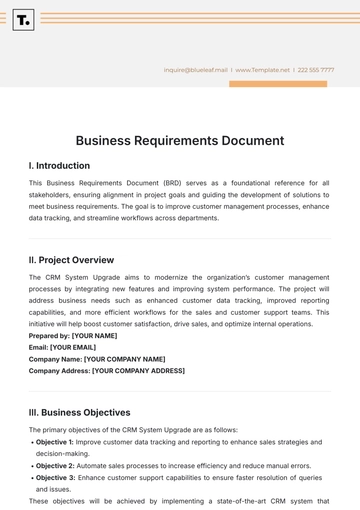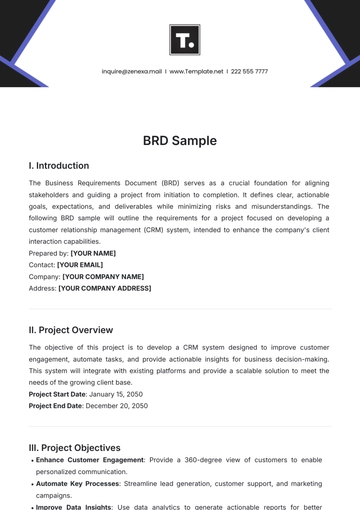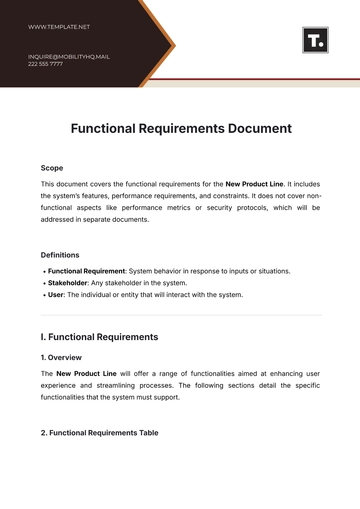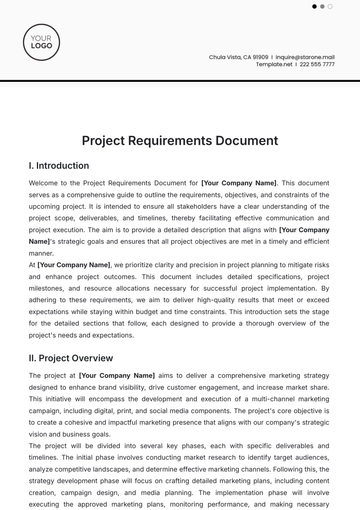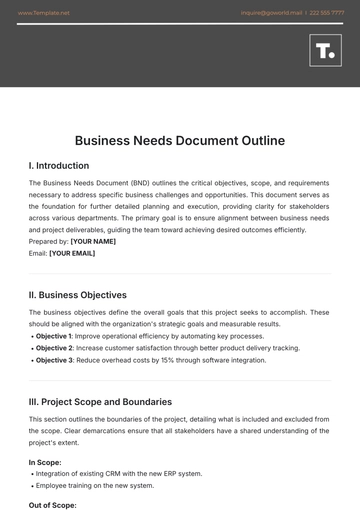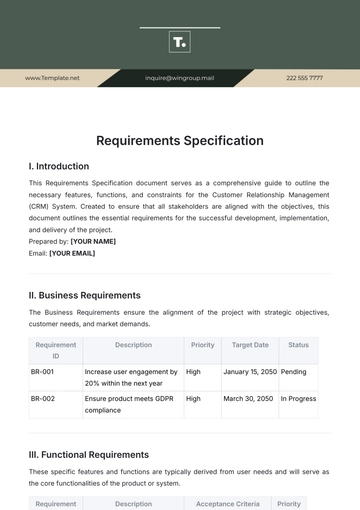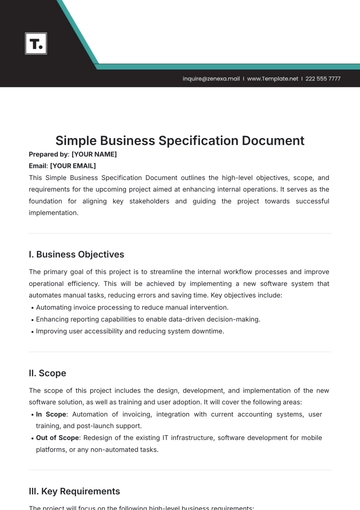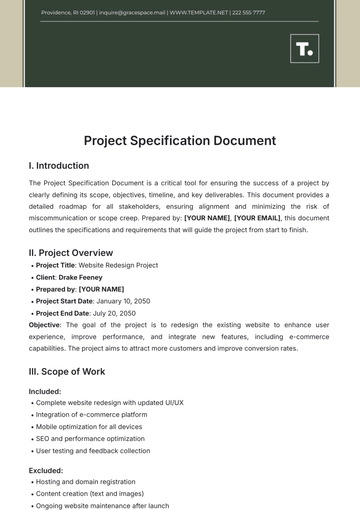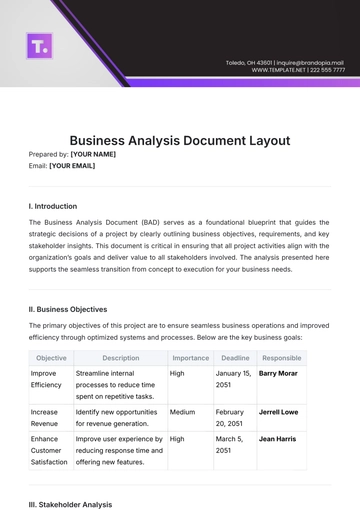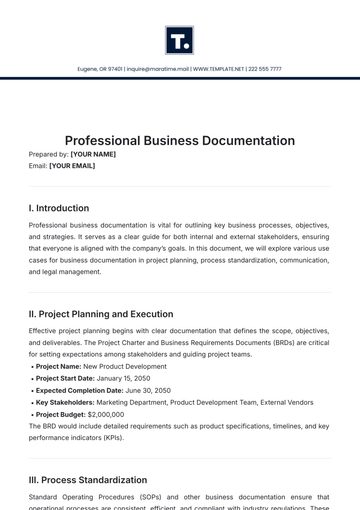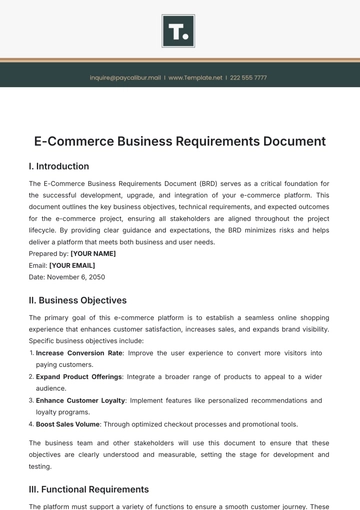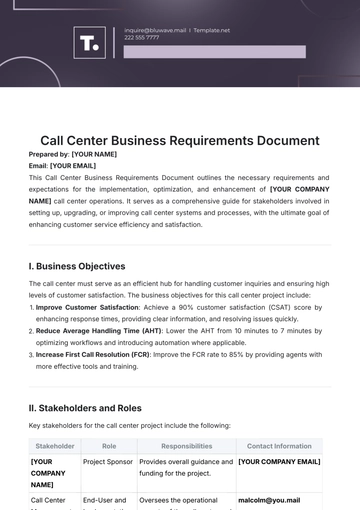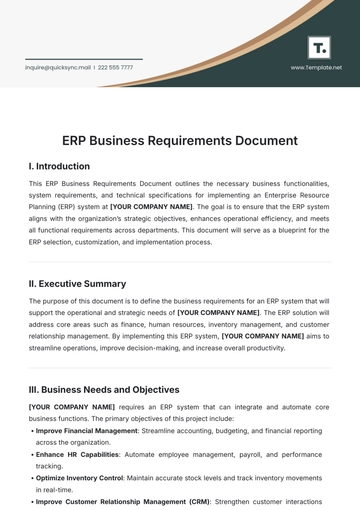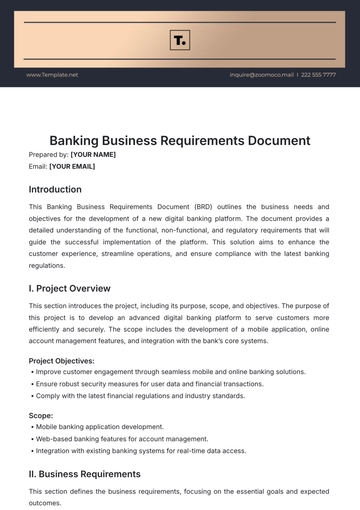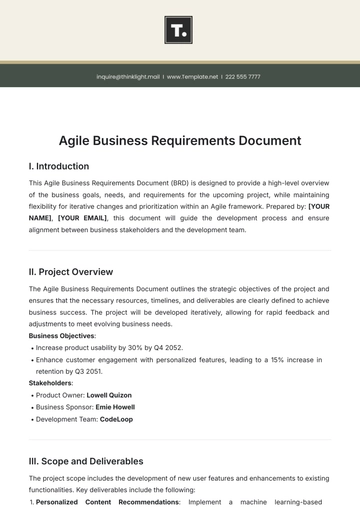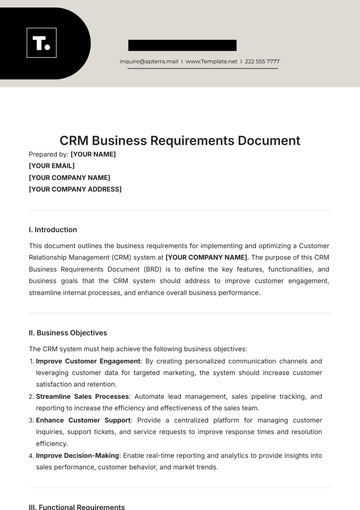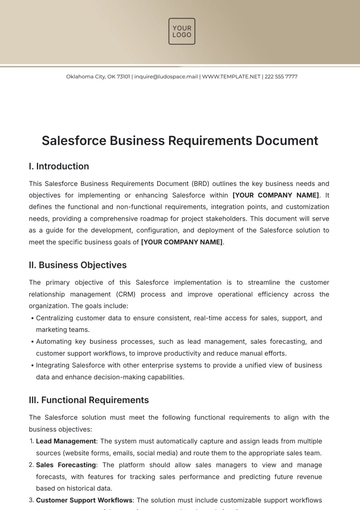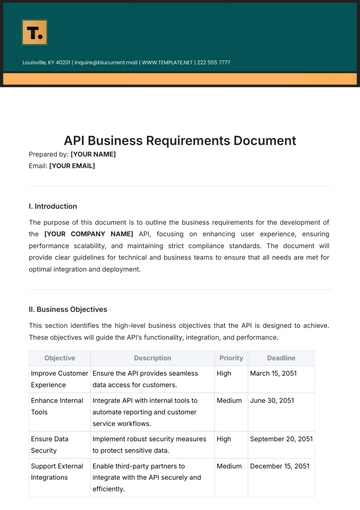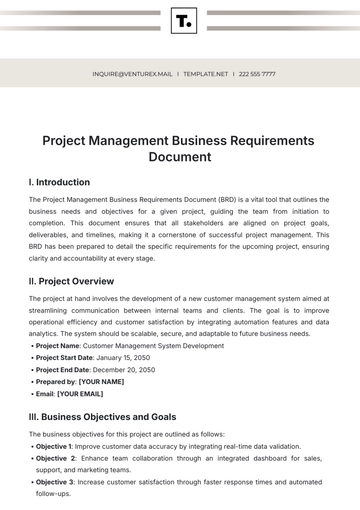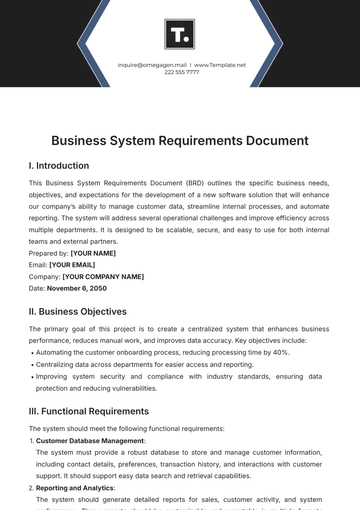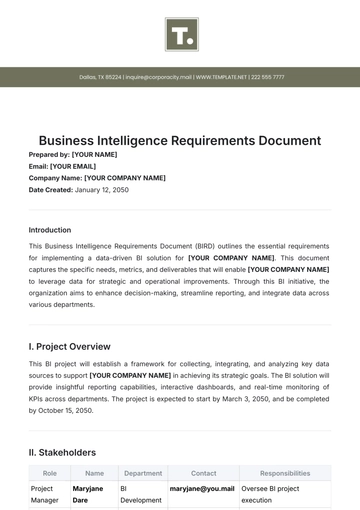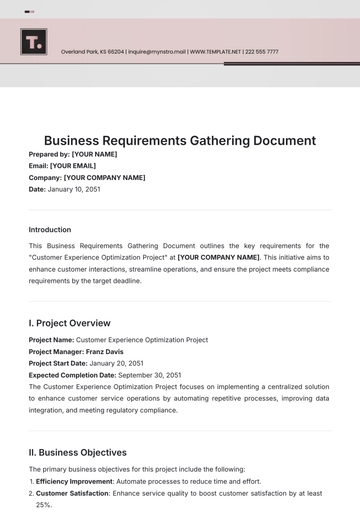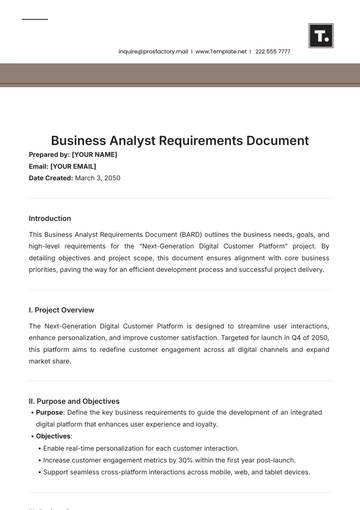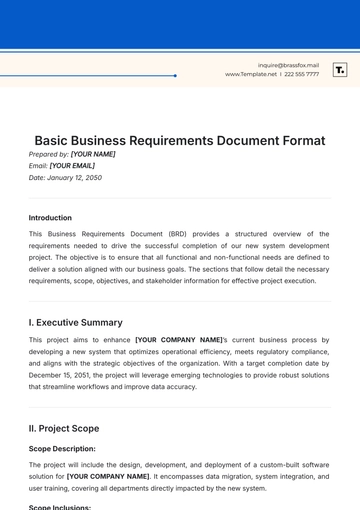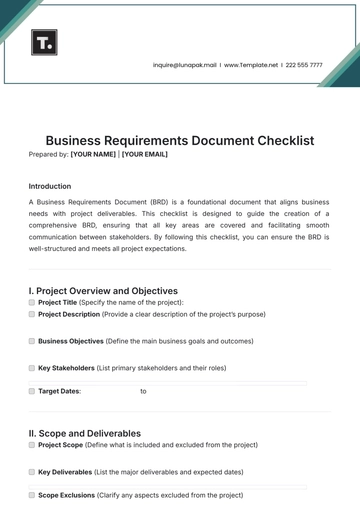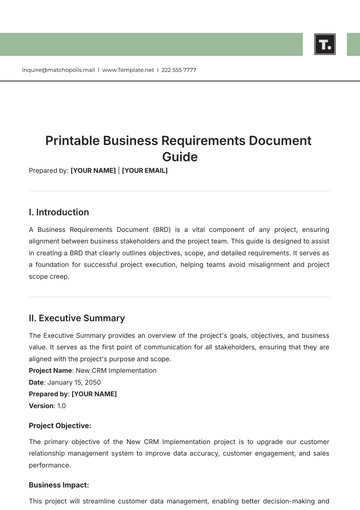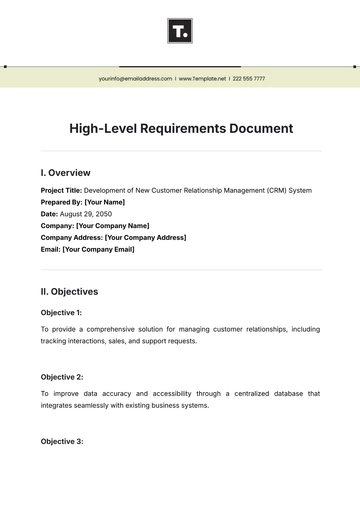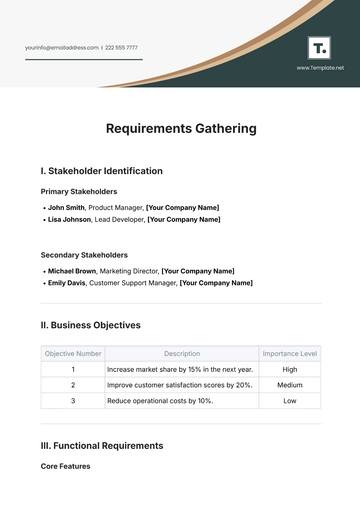Free Business Continuity Requirements

1. Introduction
Business continuity requirements are crucial for maintaining an organization’s ability to perform essential functions during and after a disaster. This document provides a comprehensive overview of the necessary requirements for establishing a robust Business Continuity Plan (BCP). The goal is to ensure that the organization can withstand disruptions and continue its operations with minimal impact.
2. Objective
The primary objective of these requirements is to:
Identify Risks: Determine potential threats that could disrupt business operations.
Mitigate Risks: Develop strategies to reduce the likelihood and impact of these threats.
Manage Disruptions: Implement procedures to maintain business functions and recover swiftly from any incidents.
3. Scope
This document applies to:
All Departments: Includes every department, function, and service within the organization.
All Personnel: Encompasses employees, contractors, and partners involved in the business processes.
4. Roles and Responsibilities
4.1. Business Continuity Manager
Responsibilities:
Develop and maintain the BCP.
Conduct regular training and drills.
Coordinate recovery efforts during an incident.
4.2. Department Heads
Responsibilities:
Ensure department-specific continuity plans align with the organization-wide BCP.
Communicate plans effectively to department staff.
Conduct department-specific drills to prepare for potential disruptions.
4.3. Employees
Responsibilities:
Understand their roles and responsibilities in the BCP.
Participate actively in training sessions and drills.
Report potential risks and issues to management.
5. Risk Assessment and Mitigation
5.1. Risk Identification
Identify potential threats that could impact business operations. Common threats include natural disasters, cyber-attacks, and infrastructure failures.
5.2. Risk Analysis
Risk | Likelihood | Impact | Mitigation Strategies |
|---|---|---|---|
Natural Disasters | Low | High | Develop comprehensive evacuation plans, secure off-site data storage solutions. |
Cyber Attacks | Medium | High | Implement robust IT security measures, conduct regular vulnerability assessments, and deploy advanced threat detection systems. |
Infrastructure Failures | High | Medium | Perform regular maintenance, establish backup power systems, and ensure redundancy in critical infrastructure. |
6. Business Continuity Plan Components
6.1. Emergency Response
Detail immediate actions to be taken during an emergency, including evacuation procedures, emergency contact information, and communication protocols.
6.2. Business Impact Analysis (BIA)
Assess potential impacts of disruptions on business operations, identify critical functions and processes, and prioritize them based on their importance to the organization’s survival and recovery.
6.3. Recovery Strategies
Develop and document strategies to recover and restore critical business operations within an acceptable timeframe. This includes resource allocation, backup procedures, and restoration plans.
6.4. Plan Maintenance
Regularly review and update the BCP to ensure it remains effective and relevant to current business conditions and potential threats.
7. Training and Awareness
7.1. Training Programs
Implement comprehensive training programs to ensure all employees understand the BCP and their specific roles. Training should be tailored to different levels of responsibility within the organization.
7.2. Drills and Exercises
Conduct regular drills and exercises to test the effectiveness of the BCP. Use these exercises to identify areas for improvement and ensure that all personnel are familiar with their roles during an incident.
8. Communication Plan
8.1. Internal Communication
Establish clear and efficient communication channels within the organization to disseminate information during a disruption. Ensure all employees know how to receive updates and instructions.
8.2. External Communication
Develop protocols for communicating with external stakeholders such as customers, suppliers, and regulatory bodies. This should include predefined messaging and contact strategies to manage public relations and maintain trust.
9. Plan Review and Continuous Improvement
9.1. Regular Reviews
Conduct regular reviews of the BCP to ensure its ongoing relevance and effectiveness. This includes evaluating the outcomes of drills and real incidents to determine if adjustments are necessary.
9.2. Feedback Mechanism
Implement a feedback mechanism to capture lessons learned from drills, real incidents, and reviews. Use this feedback to make continuous improvements to the BCP, enhancing the organization’s resilience and preparedness.
This document serves as a foundational guide to developing and maintaining a comprehensive business continuity plan. By following these requirements, organizations can better prepare for and respond to disruptions, ensuring continued operations and minimized impact on their business functions.
- 100% Customizable, free editor
- Access 1 Million+ Templates, photo’s & graphics
- Download or share as a template
- Click and replace photos, graphics, text, backgrounds
- Resize, crop, AI write & more
- Access advanced editor
Elevate your business resilience with the customizable Business Continuity Requirements Template offered by Template.net. This fully downloadable and printable template ensures your business is prepared for any disruption. Easily editable in our AI Editor Tool, it streamlines the creation of comprehensive continuity plans, making it an essential resource for safeguarding your operations.
